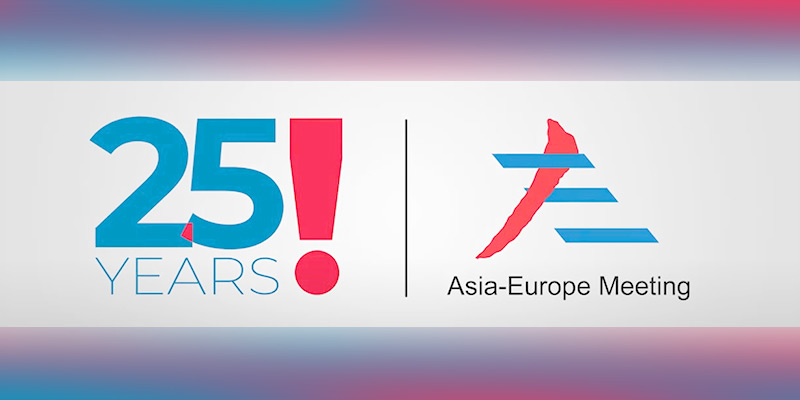- World
- Nov 26
Explainer / What is ASEM?
Vice President M. Venkaiah Naidu addressed the first plenary session of the 13th ASEM Summit virtually on November 25.
2021 marks the 25th anniversary of the Asia-Europe Meeting (ASEM) Process fostering dialogue and cooperation, mutual respect, and equal partnership between Asia and Europe.
The two-day summit is being hosted by Cambodia in the virtual format and is themed ‘Strengthening Multilateralism for Shared Growth’.
What is ASEM?
• The Asia-Europe Meeting (ASEM) was established as a dialogue forum in 1996 with 26 partners to bridge Asia and Europe.
• Today, ASEM comprises 51 member countries and 2 regional organisations (ASEAN Secretariat and European Union).
• ASEM partners represent 65 per cent of global GDP, 60 per cent of the global population, 75 per cent of global tourism and 55 per cent of global trade.
• Throughout its evolution, ASEM has maintained a consistent edge as a forum for political dialogue between member countries with diverse and complementing capacities.
• ASEM is not an international organisation and has no Secretariat.
• With its 53 partners (30 European and 21 Asian countries, plus the EU and the ASEAN Secretariat), it is the biggest international leaders’ gathering after the UN General Assembly. The European group within ASEM comprises the 27 EU member states as well as Norway, Switzerland and the United Kingdom.
• The ASEM Summit takes place every two years, alternating between locations in Asia and Europe, to set out the priorities of the partnership. Foreign ministers’ meetings are organised between the ASEM Summits. Besides the biennial Summit and the foreign ministers’ Meeting, a plethora of other meetings between ministers and senior officials covering the topics of education, culture, transport and migration are held.
• ASEM is not just a meeting of governments, political leaders and senior officials. It is a platform for the people of Europe and Asia to foster joint actions towards a common future. For 25 years, ASEM has been the most comprehensive partnership between Asia and Europe, crossing hands across continents.
The origin of ASEM
• The ASEM Process arose from a mutual recognition in both Asia and Europe that the relationship between the two regions needed to be strengthened.
• In September 1994 in Singapore, and subsequently at Davos in early 1995, Singapore Prime Minister Goh Chok Tong put forward the vision that the time had come for the European Union and East Asia to forge closer ties to complement their strong ties with the United States.
• In November 1994, Singapore and France proposed at the EU-Asia summit meeting to be held, to consider how to build a new partnership between the two regions.
• Following Singapore’s proposal, the First ASEM Summit was held on March 1-2, 1996 in Bangkok, Thailand.
ASEM pillars
ASEM is underpinned by a three pillar structure:
1) Political
2) Economic & financial
3) Social, cultural & educational.
Cross dimensional linkages between these pillars in a globalised world make ASEM an important meeting point for dialogue and communication among ministers and officials working towards a shared vision of peace, prosperity and sustainable development in both regions.
What is the significance of ASEM?
• ASEM has increased global perception of the two regions.
• It complements existing relations between the countries and peoples of Asia and Europe.
• ASEM provides a new layer of dialogue and cooperation on international and inter-regional issues of common interest.
• Successful exchanges have included matters relating to the United Nations, World Trade Organisation (WTO), terrorism, weapons of mass destruction, migration, climate change, and globalisation.
• ASEM partners can also develop and test new ideas for future policy-making. For instance, it facilitates transfer of technology to Asian countries. Conversely, European partners can gain a better understanding of Asia’s regional developments through shared knowledge on specific issues.
• Through its informal process based on equal partnership and enhancing mutual understanding, ASEM facilitates and stimulates progress but does not seek to duplicate bilateral and other multilateral relationships between Asia and Europe.
• ASEM has become the most influential comprehensive partnership between Asia and Europe, where developments in the international landscape have increased the value of ASEM as a key building block for an open, cooperative and rules-based international system.
• As the largest cooperation forum between the two continents, ASEM has been instrumental in forging links and multi-layered cooperation for peace and development.
Asia-Europe Foundation (ASEF)
• To complement the ASEM Process, the First ASEM Foreign Ministers’ Meeting in February 1997 welcomed the establishment of the Asia-Europe Foundation (ASEF).
• Based in Singapore, ASEF provides opportunities for Asians and Europeans to exchange ideas and collaborate, to achieve innovative and substantive solutions for common global challenges.
• ASEF is an inter-governmental not-for-profit organisation.
• As the only permanent institution of the ASEM, ASEF’s overall work revolves around and complements the ASEM Process and bringing together 51 countries, the European Union and the ASEAN Secretariat.
• ASEF translates the ASEM Agenda into concrete activities that enable exchange between Asians and Europeans, between civil society and government.
ASEM and India
• India has been an active participant in ASEM since 2008.
• India contributed $100,000 annually to ASEF since becoming a member of ASEM till 2010 to support collaborative initiatives being undertaken by ASEF. Increased annual contribution of $120,000 has been made by India since 2011.
ASEM Day
• To commemorate the First ASEM Summit held on March 1-2, 1996 in Bangkok, ASEM Day is observed on March 1 annually.
Manorama Yearbook app is now available on Google Play Store and iOS App Store



